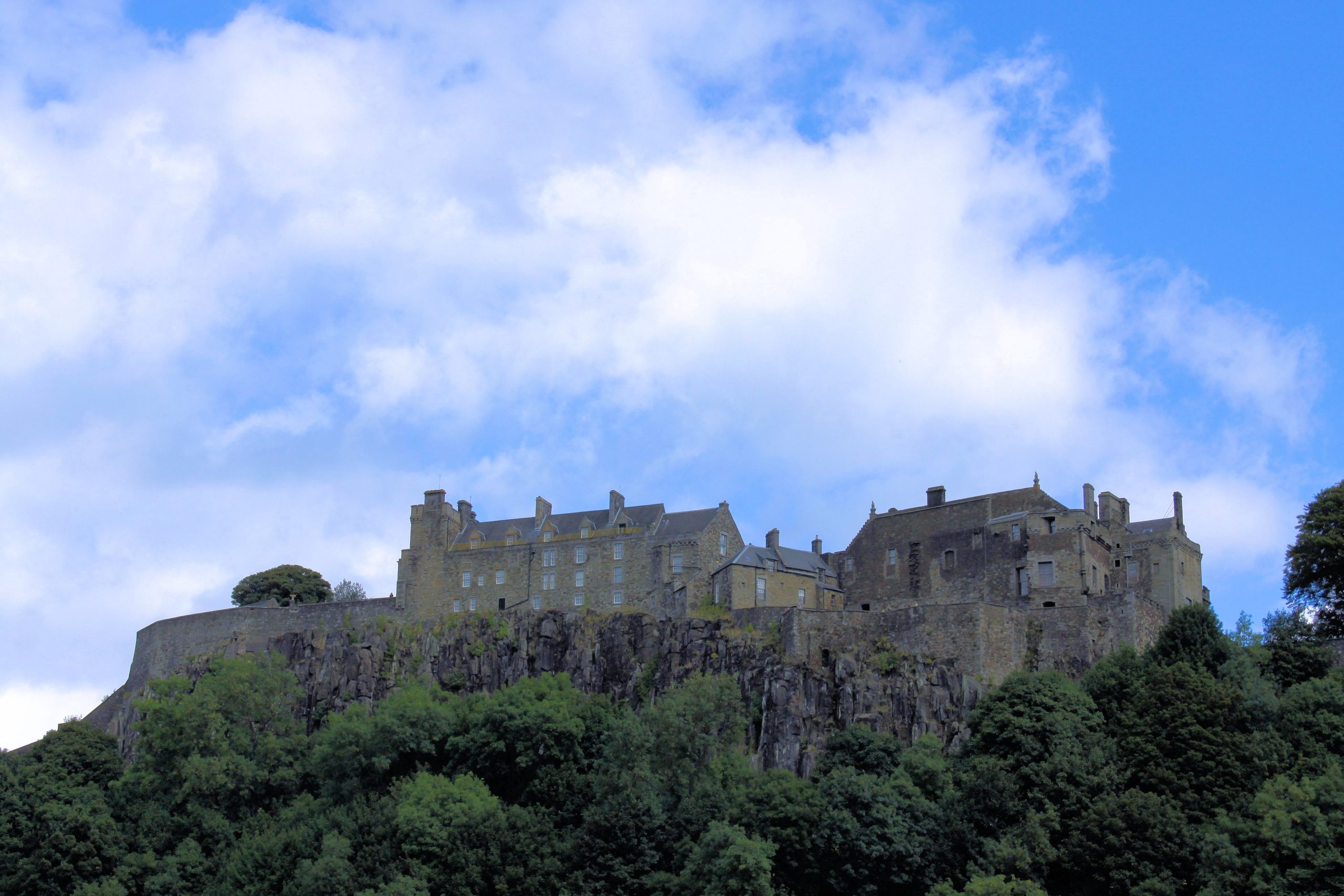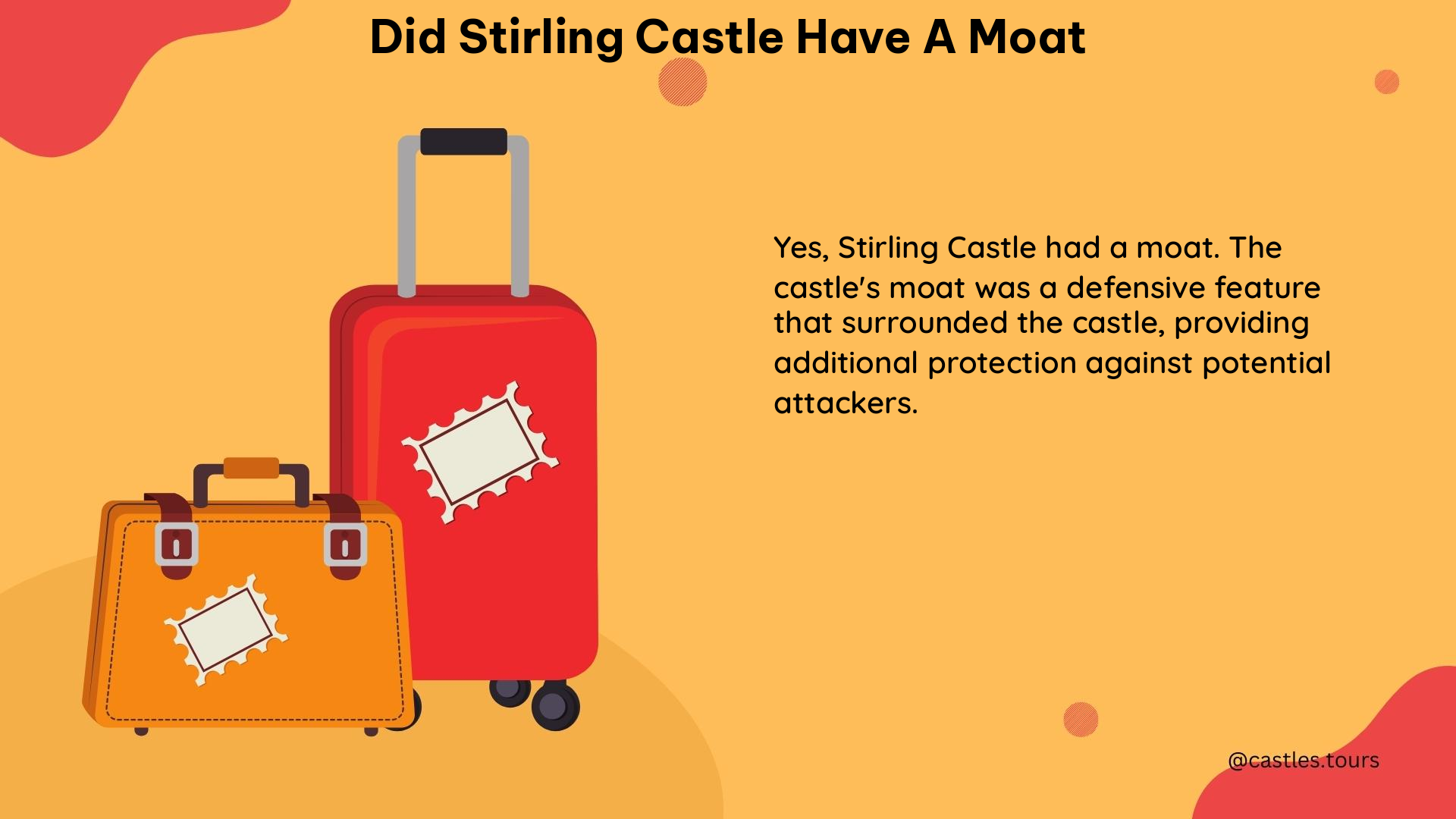Yes, Stirling Castle did have a moat. The castle’s outer defences, which date back to the early 18th century, include a deep rock-cut ditch that was part of the castle’s defensive system. This ditch served as a moat, providing an additional layer of protection against potential invaders.
The Moat at Stirling Castle

Stirling Castle, one of Scotland’s most iconic and historically significant fortresses, has a long and fascinating history. The castle’s strategic location, perched atop a volcanic crag, made it a highly coveted stronghold throughout the centuries. As part of its formidable defences, Stirling Castle was equipped with a moat, a key feature that played a crucial role in the castle’s security.
The Purpose of the Moat
The moat at Stirling Castle served several important purposes:
-
Defensive Barrier: The deep, rock-cut ditch surrounding the castle created a significant obstacle for potential attackers, making it more difficult for them to approach and breach the castle’s walls.
-
Water-Filled Deterrent: While the moat at Stirling Castle was not typically filled with water, the presence of the ditch itself acted as a deterrent, discouraging direct assaults and forcing attackers to find alternative means of accessing the castle.
-
Controlled Access: The moat allowed the castle’s defenders to control the entry and exit points, ensuring that only authorized personnel could enter or leave the fortress.
The Construction of the Moat
The moat at Stirling Castle was not a natural feature but rather a man-made defensive structure. The ditch was carved directly into the volcanic rock upon which the castle was built, creating a formidable barrier that was difficult to breach.
The construction of the moat was a significant engineering feat, requiring extensive planning, labour, and resources. The depth and width of the ditch were carefully designed to provide maximum protection, with the rock-cut walls ensuring that the moat could not be easily filled in or crossed.
The Evolution of the Moat
Over the centuries, the moat at Stirling Castle underwent various modifications and adaptations to keep pace with changing military technologies and tactics.
-
Early Defences: The earliest iterations of the moat likely date back to the 12th or 13th centuries, when the castle was first established as a significant royal stronghold.
-
18th-Century Upgrades: In the early 18th century, the castle’s defences were significantly upgraded, including the construction of the rock-cut ditch that served as the moat.
-
Modern Preservation: Today, the moat at Stirling Castle is a well-preserved feature, offering visitors a glimpse into the castle’s rich history and the ingenuity of its builders.
The Importance of the Moat in Stirling Castle’s Defences

The moat was a crucial component of Stirling Castle’s overall defensive system, working in conjunction with other fortifications to provide a multi-layered protection against potential attackers.
Complementary Defences
In addition to the moat, Stirling Castle’s defences included:
- Thick, Sturdy Walls: The castle’s walls were constructed of solid stone, providing a formidable barrier against assault.
- Towers and Bastions: Strategically placed towers and bastions allowed the castle’s defenders to monitor and defend the surrounding area.
- Gatehouses: The castle’s gatehouses, with their own defensive features, controlled access to the fortress.
Together, these elements created a comprehensive defensive system that made Stirling Castle a highly secure and challenging target for would-be invaders.
Tactical Advantages
The moat at Stirling Castle offered several tactical advantages to the castle’s defenders:
-
Visibility and Sightlines: The depth and width of the moat provided clear sightlines for the castle’s archers and artillery, allowing them to effectively target and engage approaching enemies.
-
Slowing Attackers: The moat forced attackers to slow their advance, making them more vulnerable to the castle’s defensive measures.
-
Limiting Access: The moat restricted the number of entry and exit points, making it easier for the defenders to control and secure the castle’s perimeter.
-
Psychological Deterrent: The presence of the moat, with its formidable appearance and defensive capabilities, could discourage potential attackers from even attempting an assault.
The Moat’s Role in Stirling Castle’s History
The moat played a significant role in the castle’s history, influencing the course of many important events and battles.
Sieges and Battles
Stirling Castle’s moat was put to the test during numerous sieges and battles throughout its history. The moat’s defensive capabilities helped the castle withstand attacks from various invading forces, including the English during the Wars of Scottish Independence.
Significant Moments
The moat at Stirling Castle was a witness to several pivotal moments in Scottish history, including:
- The Battle of Stirling Bridge (1297): During this famous battle, the Scottish forces led by William Wallace defeated the English army, a victory that helped to inspire the Scottish War of Independence.
- The Siege of Stirling Castle (1304): The English, under the command of Edward I, eventually captured the castle after a prolonged siege, highlighting the importance of the moat in the castle’s defences.
- The Siege of Stirling Castle (1746): During the Jacobite rising, the castle was besieged by Jacobite forces, but the moat and other defences helped the Hanoverian garrison to hold out until the siege was lifted.
Visiting Stirling Castle and its Moat
Today, visitors to Stirling Castle can explore the well-preserved moat and learn about its role in the castle’s history. The moat is a popular feature of the castle’s guided tours, offering visitors a unique perspective on the castle’s formidable defences.
Exploring the Moat
Visitors can walk along the edge of the moat, taking in the impressive depth and scale of the rock-cut ditch. The moat’s strategic location and its relationship to the castle’s other defensive features can be easily observed and understood.
Interpretive Displays
The castle’s interpretive displays and educational materials provide visitors with detailed information about the moat, its construction, and its role in the castle’s history. Visitors can learn about the engineering feats involved in creating the moat, as well as the tactical advantages it provided to the castle’s defenders.
Guided Tours
Guided tours of Stirling Castle often include a visit to the moat, with knowledgeable guides sharing the stories and significance of this important defensive feature. Visitors can gain a deeper understanding of the castle’s history and the crucial role played by the moat in its survival over the centuries.
Conclusion
Stirling Castle’s moat was a vital component of the castle’s formidable defensive system, providing an additional layer of protection against potential invaders. The rock-cut ditch, with its impressive depth and strategic location, played a crucial role in the castle’s history, influencing the course of many significant events and battles.
Today, the well-preserved moat at Stirling Castle offers visitors a unique opportunity to explore and understand the castle’s rich history and the ingenuity of its builders. Whether you’re a history enthusiast, a castle lover, or simply someone interested in exploring Scotland’s iconic landmarks, a visit to Stirling Castle and its moat is sure to be a memorable and enlightening experience.
Reference:
– Stirling Castle Official Website
– Historic Environment Scotland
– Undiscovered Scotland
